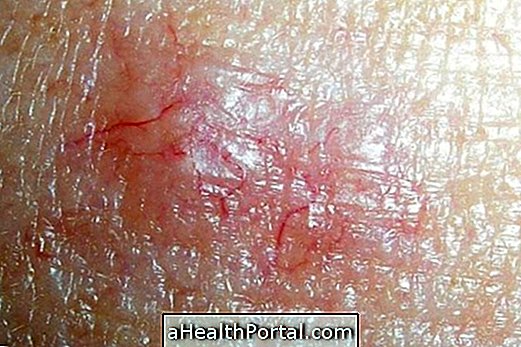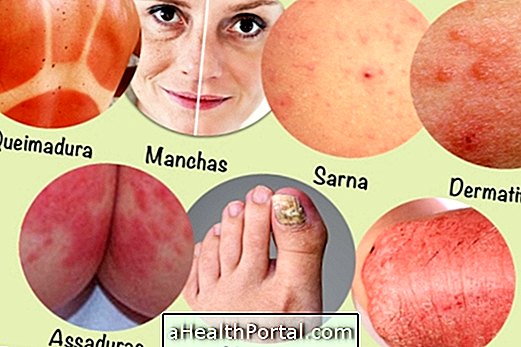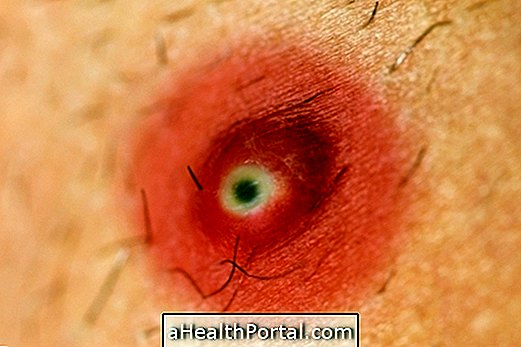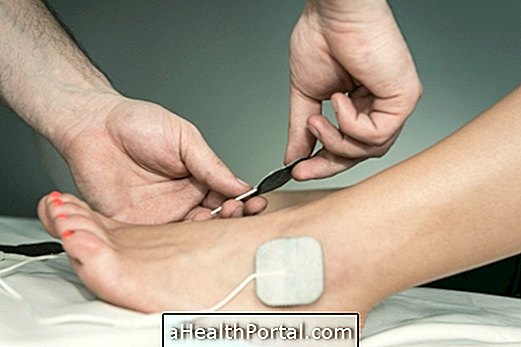There are 3 types of skin cancer that are basal cell carcinoma, squamous cell carcinoma and malignant melanoma.
When a suspicious sign appears on the skin that changes color, shape or size, you should consult a dermatologist to check for malignancy and what to do in each case. Here's how to evaluate the signs of skin cancer.
1. Basal Cell Carcinoma
Basal cell carcinoma is the most severe and most frequent type of cancer, occurring in more than 95% of cases. It appears as a pink spot on the skin that grows slowly, as the image shows, being more common in light-skinned people after the age of 40.

Where it may arise: It almost always appears in regions of much sun exposure, such as face, neck, ears and scalp, but may also arise in other parts of the body.
How to protect yourself: use sunscreen daily with adequate protection factor, especially during the hottest hours of the day.
2. Squamous cell carcinoma
Squamous cell carcinoma is the second most common type of skin cancer and most commonly occurs in men, although it may also develop in women of any age. It has the shape of a knot that grows fast and forms a cone, as shown in the image. This type may appear due to sun exposure, but it can also happen in those who do chemotherapy and radiation treatments or have chronic skin problems such as wounds that do not heal or scars.

Where it may occur: It is most common in places exposed to the sun, but can also occur in areas covered with damage such as wrinkled or loss of elasticity.
How to protect yourself: get sunscreen every day, avoid exposure to cigarettes and other toxic substances. In addition, the dermatologist should be consulted whenever skin changes occur.
3. Malignant melanoma
Malignant melanoma is the most dangerous of all, it appears as a dark chick, as the picture shows, which goes deforming over time. It can be fatal if not identified early, as it can develop rapidly and reach other organs such as the lung.

Where it may arise: It often develops in regions exposed to the sun or suffering from rapid burn, such as face, shoulders, scalp or ears, especially in people with very light skin.
How to protect yourself: in addition to using sunscreen daily it is important to do a constant examination of the skin to see if any dots, signs or spots change characteristics, quickly consult a dermatologist if this happens.
Here's how to identify the main signs of melanoma.
























